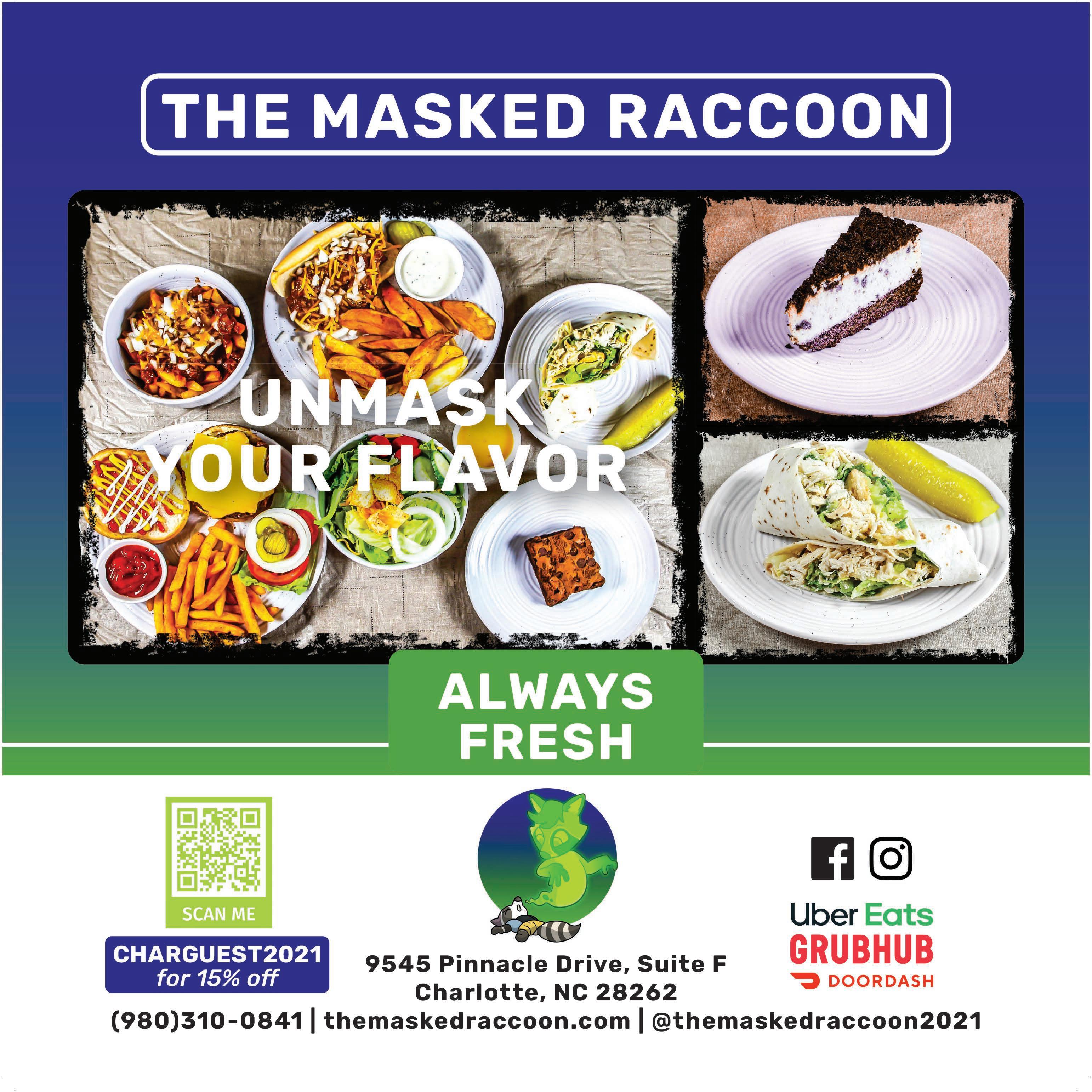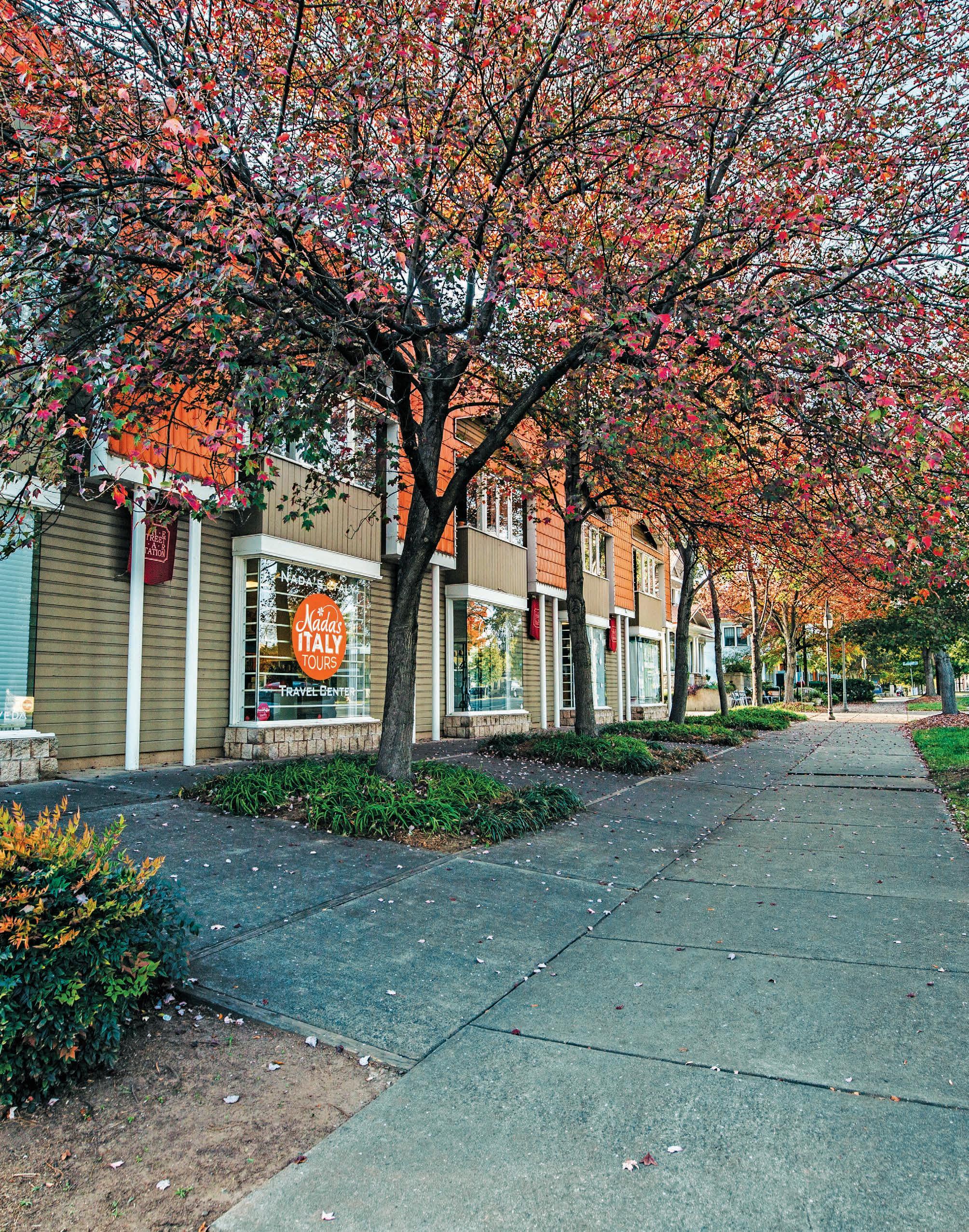
3 minute read
GET TO KNOW
Dilworth
Originally the brainchild of Edward Dilworth Latta in the 1890s, Dilworth was Charlotte’s first streetcar suburb. To attract residents and businesses to the area, Latta built a 90-acre park. The community was constructed as a grid that centered on East Boulevard, welcoming families to the turn-ofthe-century, colonial-revival and Craftsman-style architecture. Today, a new generation has discovered the charm and neighborliness of Dilworth, with its tree-lined streets, front porches and family-friendly sidewalks. It continues to thrive as one of the city’s most historic and popular neighborhoods. Freedom Park is a year-round hub for outdoor activity and festivals. Shops and restaurants add to the area’s appeal, especially on East Boulevard, which has earned a reputation as being Charlotte’s boutique row. charlottesgotalot.com/neighborhoods/dilworth
GET TO KNOW
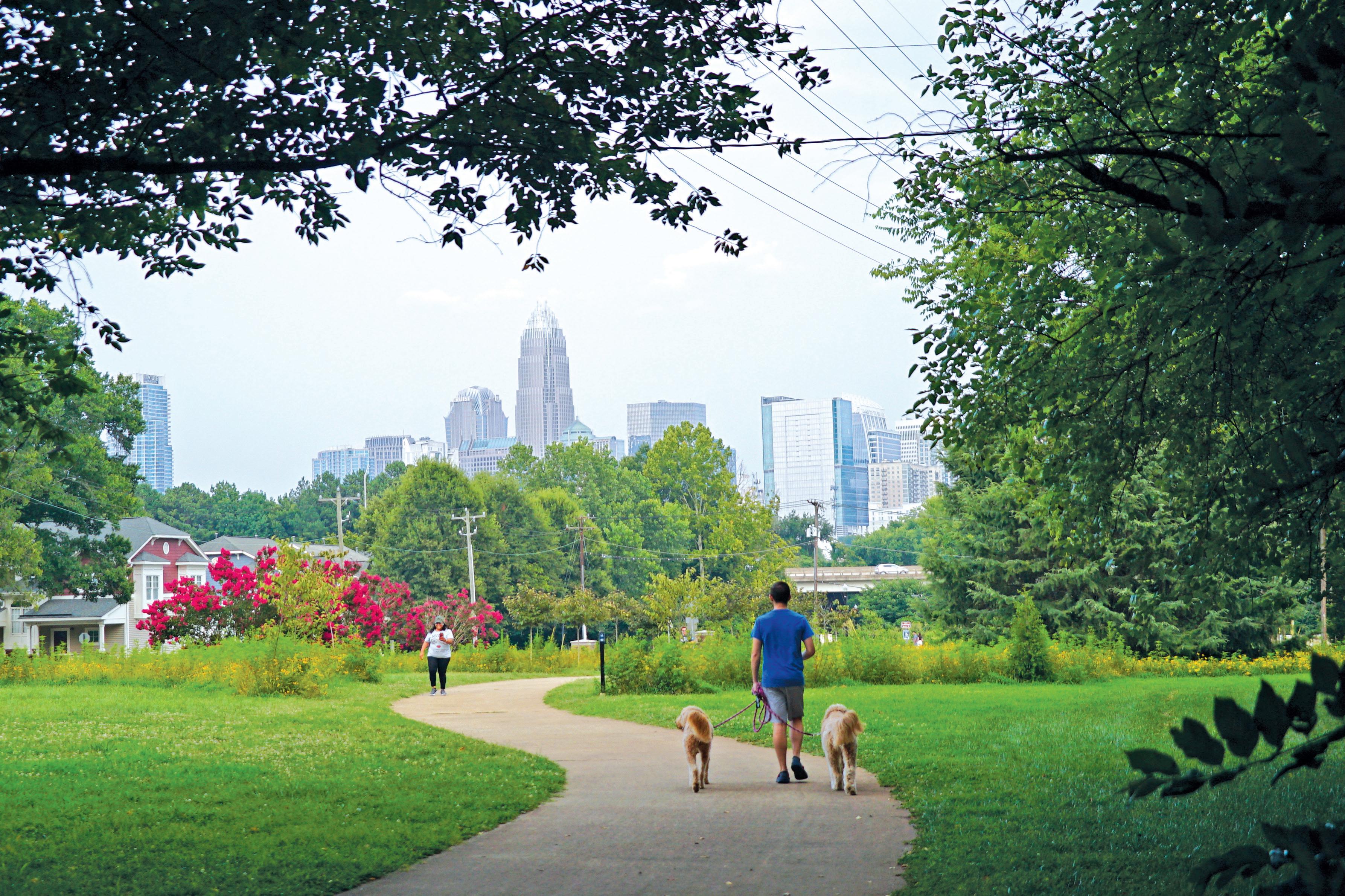
Wesley Heights/FreeMoreWest
Wesley Heights, listed on the National Register of Historic Places, was developed in the 1920s and is full of bungalow-style homes and tree-lined streets. It’s sometimes referred to as FreeMoreWest, the spot where two main throughfares, West Morehead and Freedom, intersect. Welcome to the city’s west end, where development is in full bloom, and Uptown is just a short walk away. Skyline views can easily be had, without all the crowds. Craft beer, contemporary art, great barbecue and divine pastries are all easily found here, respectfully, at venues such as Town Brewing Company, LaCa Projects, Noble Smoke, The Batchmaker and many more. Pinky’s Westside Grill has been featured on “Diners, Drive-ins and Dives” not once, but twice. Ready to go for a stroll? Visit the Irwin Creek and Stewart Creek greenways, a pleasant trek to Uptown. charlottesgotalot.com/neighborhoods/wesley-heights
GET TO KNOW
NoDa
Short for North Davidson, the area surrounding the intersection of North Davidson and 36th streets once thrived as the site of the city’s first textile mill village. Decades later, artists transformed the dilapidated village into Charlotte’s premier arts community. This urban neighborhood continues to undergo a complex transition— the lifestyle of bohemian artists remains present, but it is now joined by trendy restaurants and breweries, renovated mill houses, hip lofts and alluring bungalow homes retrofitted for the standards of modern living. Make a trip to NoDa to attend one of its gallery crawls or to see a show at beloved local music venue, the Neighborhood Theatre, or grab a cup of coffee at Smelly Cat Coffeehouse. noda.org
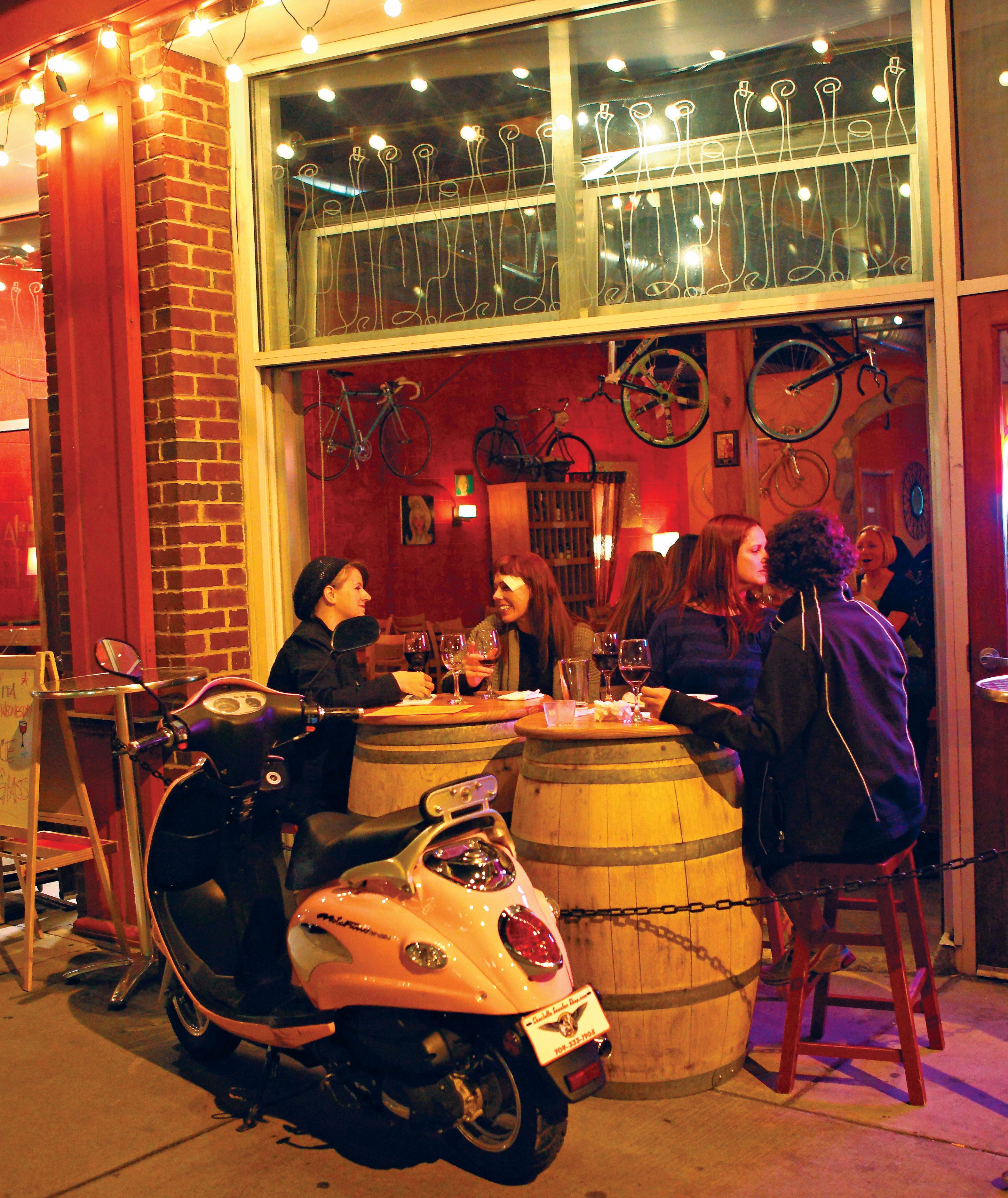
GET TO KNOW
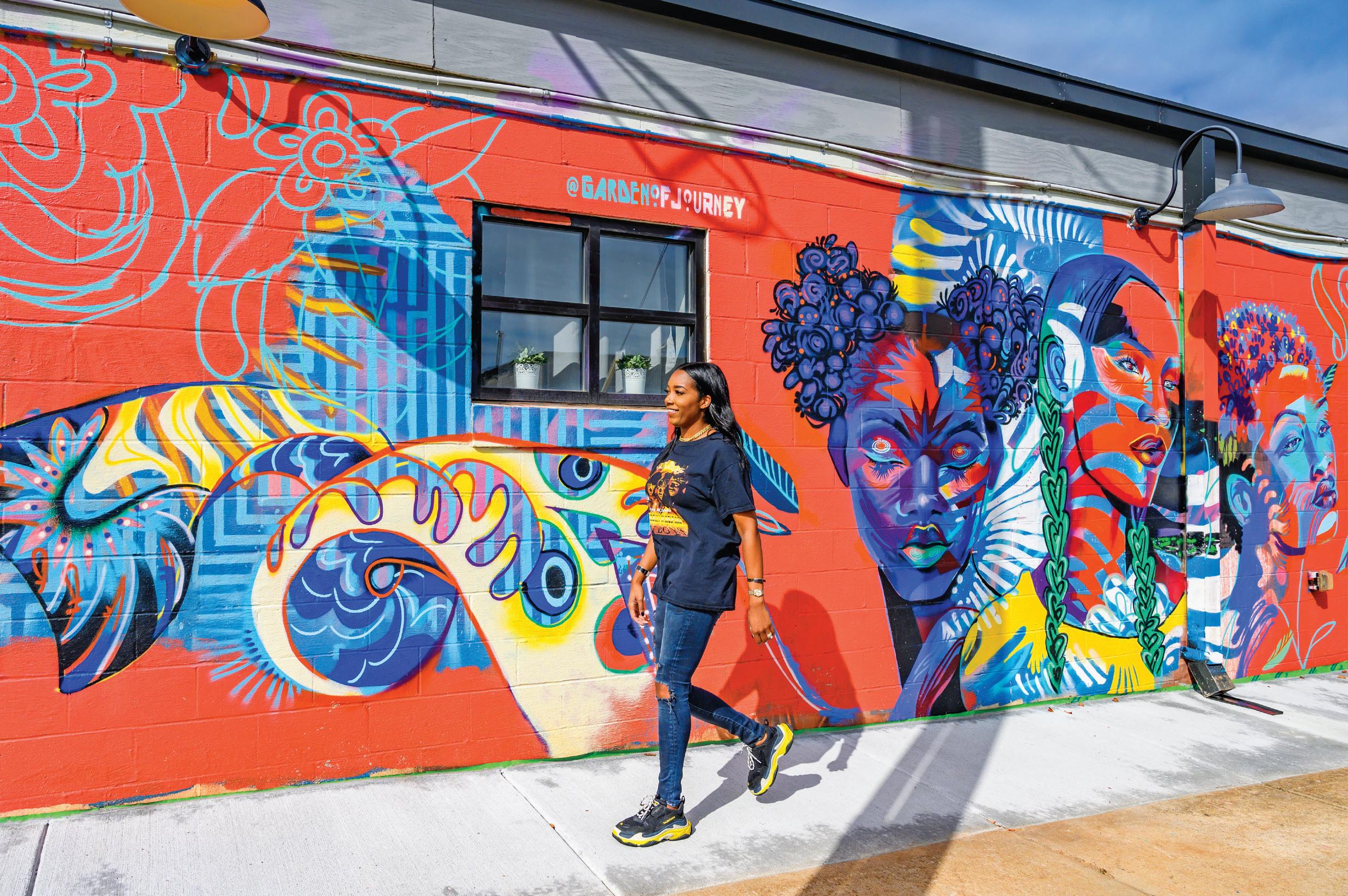
Plaza Midwood/Elizabeth
The Plaza and Central Avenue are the two main draws of Plaza Midwood, an affluent, residential neighborhood that originated in the 1920s as a streetcar suburb. Enjoy its diners, eateries serving food from around the world and other casual restaurants—one of the most famous being the Midwood Smokehouse—as well as shops focused on skateboarding, vintage gear, records and LGBTQ books. Where Uptown’s East Trade Street turns into Elizabeth Avenue, you’ll enter the charmingly hip neighborhood of Elizabeth. No, this place isn’t named after the HRH Queen Elizabeth II (as one might assume, given that Charlotte itself is named for a former royal). It actually takes its moniker from Elizabeth College, a small Lutheran women’s school that was situated within its bounds. The suburban-style burgh and leafy historic district is another that thrived in the early part of the 20th century, thanks to the streetcar. elizabethcommunity.com
GET TO KNOW
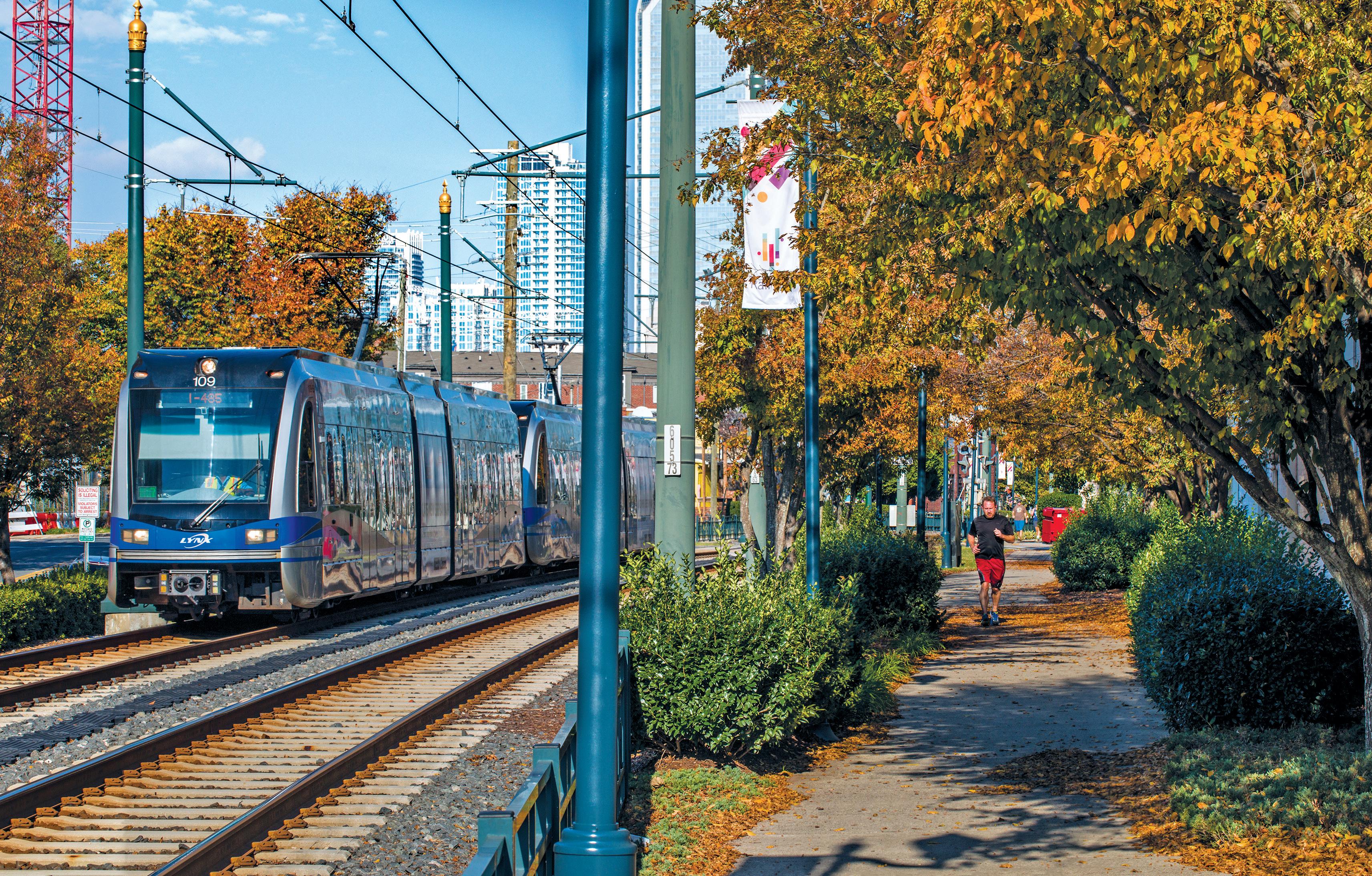
South End
The remnants of a thriving, turn-of-the-century textile industry give this Charlotte enclave a beer-fueled identity with upwards of a dozen local craft breweries and taprooms taking up residency in former mill buildings. But brewers aren’t the only people walking these streets just south of Uptown. In the same neighborhood where the region’s first railroad steamed into Charlotte in 1852, the Blue Line light rail transports visitors from Uptown, SouthPark and NoDa. Hundreds of designers—from the fashion industry to the web— have offices here. By the way, American novelist Carson McCullers wrote the opening chapters of her first book, “The Heart Is a Lonely Hunter,” while living in a boarding house on East Boulevard. southendclt.org
